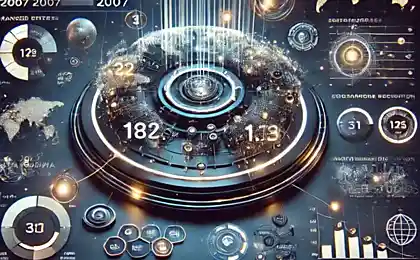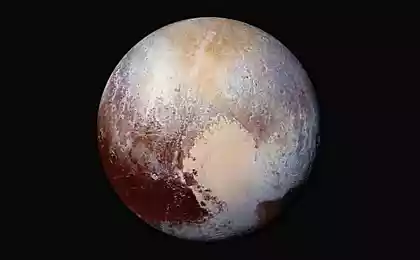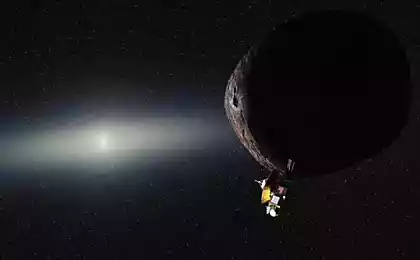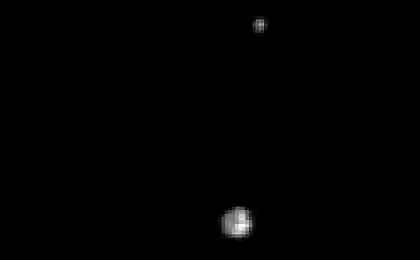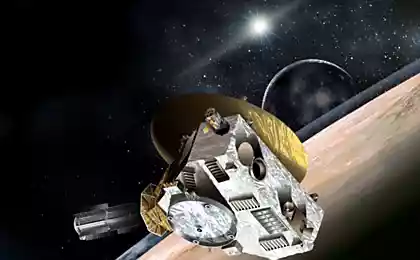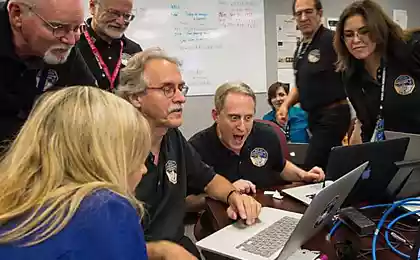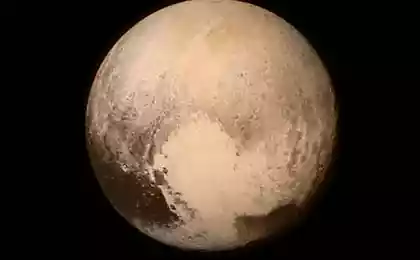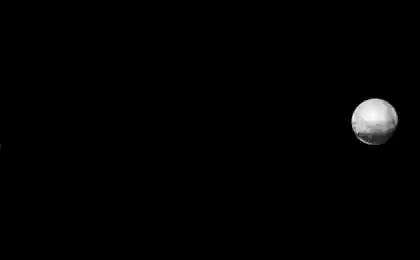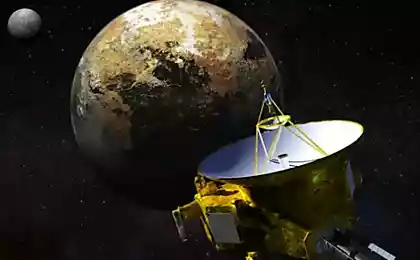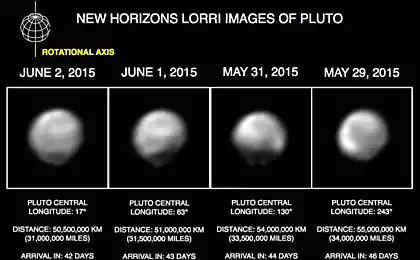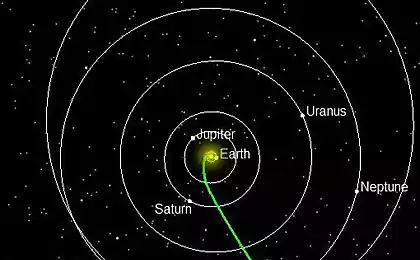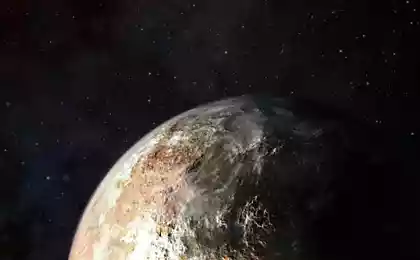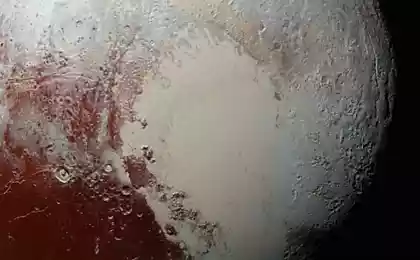736
Pluto continues to surprise astronomers

In the photo seen misty halo around Pluto. This is its atmosphere. The picture obtained July 15 probe New Horizons, at a distance of 2 million kilometers from Pluto (NASA) i>
New Horizons stunned the world with plenty of detailed pictures of Pluto and its moons. After studying these images, scientists have concluded that the planetoid - not dead, frozen world. There is a relatively young mountains of ice. There are places where the glaciers are moving (though, of course, is very different from the relevant objects and phenomena in the world).
In addition, it became clear that Pluto has an atmosphere. The thin and almost transparent, but still there. Scientists believe that if a man was on Pluto's surface and looked up, no atmosphere, he probably would not have seen. Pluto's atmosphere is represented by the finest mist, which, however, gave the probe. Despite its ephemeral nature, the atmosphere is divided into layers, which are also clearly visible, especially at 50 and 80 km above the surface of the dwarf planet.
So far, the experts do not understand why Pluto's atmosphere is divided into such layers. Maybe the reason winds, or more complex atmospheric phenomena. Also there is the possibility that the layers exhibit passing under Pluto at different heights of different types of chemical reactions.

In the picture layers are clearly visible, especially at the height of 50 and 80 km above the surface i>
To study the properties of the atmosphere experts use two methods. The first is based on tracking the passage of a star with a known brightness behind Pluto, with an estimate of the absorption / dissipation atmosphere planetoid starlight. As a result, scientists can calculate the density of the atmosphere and its mass. This method was first used about two years ago (in general, the fact that Pluto has an atmosphere, known since the 80s of the last century).
The second method is based on the passage of Pluto through the radio, with further assessment of the dwarf planet passed through the signal probe New Horizon. Using this method, it was found that the mass of Pluto's atmosphere is twice less than the previous measurements have shown (which were accurate enough, twice the error could not be). Thus, the mass of the atmosphere has decreased by half over a period of about a quarter of a century.
If the current measurement is correct, it does not mean that some of the atmosphere of Pluto went into space The fact that Pluto's orbit is an ellipse, and now a dwarf planet is much farther from the Sun than the 80-ies of the last century. Part of the atmosphere would simply freeze, settling on the surface of Pluto. This process will prodolzhast until 2113 - when Pluto will be further from the Sun than it is now.
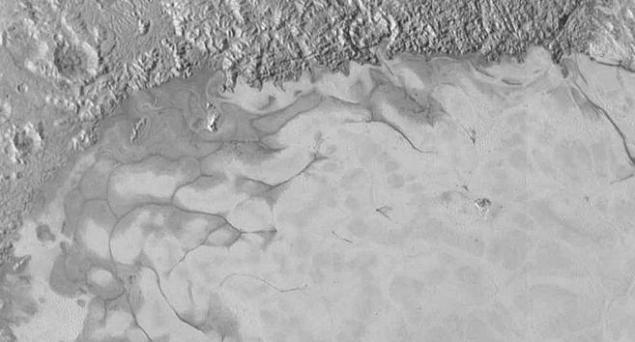
But even more surprising is the fact that the ice on the surface of Pluto moving. Such a movement was seen in the region in the form of heart. The composition of the ice - nitrogen, methane, CO, the main components of ice on Pluto.
The data obtained by scientists in many ways changed the view of astronomers on the processes occurring in the dwarf planet. This is not a dead world - is still working processes gradually change the surface of Pluto. In particular, the ice move, which could be evidence of the theory of the existence of a liquid ocean under the ice cover of Pluto.
The existence of a moving glacier makes Pluto-like worlds like Earth active or Mars. In addition, scientists have proof of the existence of complex organic compounds on Pluto. This acetylene, ethylene, and other substances. New Horizons has found traces of these compounds.
Another interesting fact is that the dark ice (mountains) is much older than the bright areas, and has billions of years. Scientists have compared the movement of ice on Pluto with the vertical movement of the glaciers in the world - ice behavior is very similar, despite the fact that the ice in the world - it is frozen water, and Pluto - frozen gases.
As you can see, Pluto - the planet is very interesting, although dwarf. Perhaps even throw planetoid scientists surprises.
Source: geektimes.ru/post/260128/
Not an easy life of a teenager with a fragile skin
Comet Churyumov-Gerasimenko noted the passage of the perihelion of fireworks
